|
|
| home | exhibitions | interviews | features | profiles | webprojects | archive |
|
Andrew Litten on painting, isolation and self-reliance e-interview Rupert White
My wife and I moved to Cornwall around 2000 and this seemed to be a time when quite a lot of people were making life-changing decisions. To be honest I was surprised to discover that Cornwall is a fantastic place for artists as the move was largely related to schooling for our two children. Cornwall works for me and I feel connected to people here and the land in a way that I have not otherwise in my life. When my wife died last year, I painted ‘Remnants’ 2020 (right) to primarily represent this sentiment of connection with place, and the role of the landscape for psychological restoration and identity.
What were you doing prior to coming down? My creativity was sporadic and supported by different part-time employment. I created my art work on kitchen tables, in garden sheds, garages, attics, bedroom floors, and even the cupboard under the stairs for a short time. I was not interested in making what I was doing look contemporary or aspirational, and chose 'un-arty' materials. This probably typified the appearance of this early work as I drew on envelopes with biro, made lots of paintings on found objects and used irregular shaped cardboard boxes as surfaces. I knew I wanted an uninhibited playful quality. My aim was to open up an impromptu free-flowing dialogue between my life and my art. I remember thinking ‘I don't want to police my thoughts’ and I said this all the time in my head in the 90's when I was making work. Before I moved to Cornwall in 2001, I began working for a photographic studio near Oxford finishing hand printed photographs. This brought me into contact with Richard Hamilton and I visited his studio. It made me really think about my own creativity more professionally. When I got to Cornwall I soon found a studio and began exhibiting.
Where was Richard Hamilton's studio then? It was in Northend, a village on the border of Oxfordshire and Buckinghamshire (I was born in Bucks). The studio was to the side of his house.
Well I did go to Amersham Art College at Foundation level. I had a great time there but became aware that I was not suited to art college. In the early 90’s, art colleges were dominated by the then emerging 'shock art' of the YBA’s. It seemed to me to be so ego-driven, and my reaction was to want to do the opposite, and to find my language in the humble commonplace. I’ve always liked the idea of an awkward honesty in art so followed my instinct. On refection, leaving college held me back for some time as I didn’t exhibit for a decade and ultimately isolated myself creatively before I moved to Cornwall. However, the self-taught aspect to my development did force me to nurture a deeper core connection with my own creativity which I think I am still self-reliant on today.
Did you have much feedback on your ideas and your work from others, or do you think you missed out on this? It is true that if you want to improve at something then you need feedback. I do have people around me who’s opinion I value. I just think as a visual artist it’s perfectly valid to be self-taught. If you are experimental and innovative you can learn for yourself. It might take more time and involve added failure, but this is a worthwhile way to learn about art and yourself in relation to the art you create. Being largely self-taught has I think allowed me to develop the facility to go deeper rather than making art that skims the surface. I think it also avoids the potential reliance on chatty art talk that is so often used to falsely justify mediocre creativity.
So do you, perhaps, have a particular way of working that is different to other painters? As a figurative painter, I have felt for a decade or so, the incredible power of paint as a medium to evoke deep levels of cognitive recognition of the human presence. By this I mean using paint as a medium, in the true sense of the word ‘medium’ when physical forces are channelled, and sensory impressions are transmitted. It honestly feels overwhelmingly powerful when it works. Actually, my long-term influences and obsessions are with Louise Bougeois and Giacometti, who are obviously both primarily sculptors, but I think they did feel this way about their chosen mediums.
Looking at your studio I have a sense that you work on a lot of different paintings at the same time, with lots of finished works that you destroy, or at least don't exhibit... I certainly like it when my studio is congested. I do have a lot of work that has not yet been exhibited and lots in storage I can grab. I have hundreds of images on my laptop of past works and their earlier stages that I refer to. It is a large reference base. I like being creative and having the feeling that I am slightly overwhelmed by too much information. I work very fast these days, but the paintings take a long time to bring into focus. There is also a level of detail and nuance that is only particularly evident close-up. Many works do remain unfinished for a long time and some of the paintings in this recent exhibition took five years to complete. I reflect on their qualities extremely carefully and the potential avenues of interpretation. With all of the works in ‘Concerning The Fragile’ I needed to feel these subjects on the deepest psychological level I could.
I think I first saw your work at Art Now Cornwall? at Goldfish in 2007. Can you comment on your relationship with Joe Clarke and his galleries, which has endured over this long time period? Yes, Joe Clarke is extremely good to work with. We met in 2004 when I had a solo exhibition with 'Dick The Dog' in Penzance and have worked together since. He instinctively understands what I am trying to do and this is so important. He has real conviction.
If you first saw my work in 2007 (possibly my solo exhibition Connect? at Goldfish in Penzance) the subject matter was subversive and bleak during that decade. The images dwelt on themes around depersonalisation and confused or dysfunctional bodily attachments to others. I think ‘Tally Man’ and ‘Mutual Bodies’ (above) are good examples which you possibly saw. I painted on board at this time to potentially allow an assemblage element, often cropping the panels to alter the reading. I now paint on heavy weight canvas which holds impasto areas well. I feel the power of colour more and more and this helps achieve the fluid varied emotive range I am wanting in the work.
All your paintings have a kind of restlessness and movement, which comes from the fluidity of the forms and the paint handling. Do you think there is a reason for this? Well for me, it’s not just about seeing the subject from one view and making an image. It’s about exploring and understanding the subject, so the turn of emotions and nuances all matter and need to be present. I think this is why the work looks restless. I want the thing I am making to feel tangible. The mind has to be tricked into recognition on variable levels. My painted figures are usually around life size and I am aware of my own body in relation to the painting so there is a behavioral connection. I want the representation to feel alive and unstable - like a mass of raw nerves on the surface.
Well I hope to express a range of emotion. I am a figurative artist and find people fascinating. I am not interested in developing some sort of stylistic art shorthand that can be applied to any image. For example, ‘Sudden Involuntary Chemical Withdrawal’ (above left) is about drug withdrawal as the title suggests. I was thinking of prescribed medication, particularly anti-depressant withdrawal. It doesn’t matter that the title doesn’t entirely reveal this, as it is the sensation of withdrawal that I wanted to paint. Many people have experienced the ‘head zaps’ as they are now called. I would not have been able to amplify the emotive content of this painting if I had not experienced it myself and understood the subject objectively from anecdote and research. This is all-important to properly grasp the subject and contextualize it. This makes the statement.
The work is often very disturbing, and you seem to be saying something really quite bleak about the human condition. This is how I experienced 'Breathing'; the portrait in the recent 'Protected by Alarms', for example (picture above). ‘Breathing’ (the piece in 'Protected by Alarms') was about someone I know suffering with long term anxiety. That is where the title comes from, and the clogged, gestural panic around the lungs. I am glad you found this bleak because I wanted that look in the eyes with the flesh on the arms feeling cold. The colour intensity within the body and surrounding space was supposed to evoke a feeling of immanent crisis. So, it is all subject-related. But actually it's not a generalised bleak outlook that I have on the human condition. I actually feel struck on a regular basis by how kind people are, and how so many people desperately want to help others.
Andrew Litten's 'Concerning the Fragile' is at Anima Mundi from 27.6.20 - 8.8.20 https://www.animamundigallery.com/exhibition-andrew-litten-concerning-the-fragile |
|
|

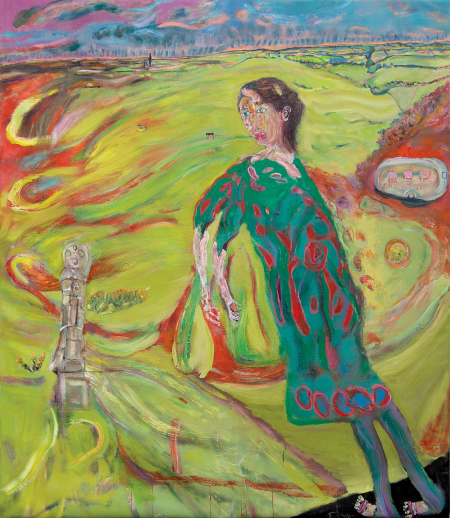 When
did you come to Cornwall, and what brought you here?
When
did you come to Cornwall, and what brought you here? 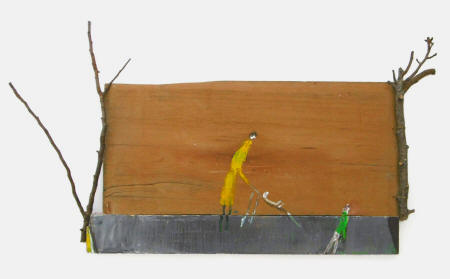 In
press releases etc you're described as self-taught. Can you try and
explain what this really means?
In
press releases etc you're described as self-taught. Can you try and
explain what this really means? 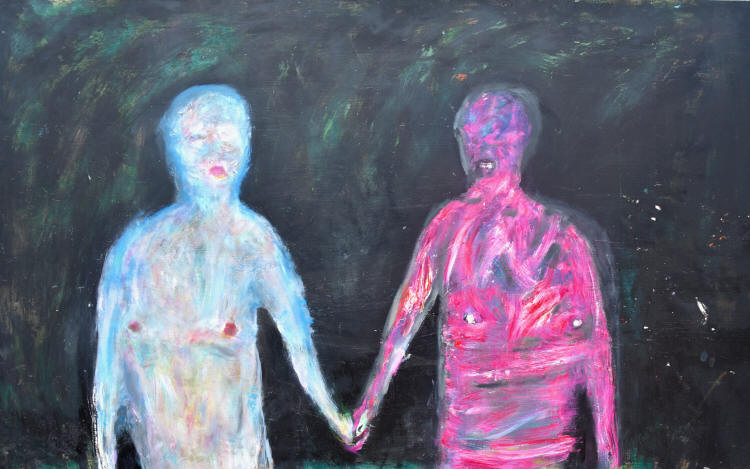
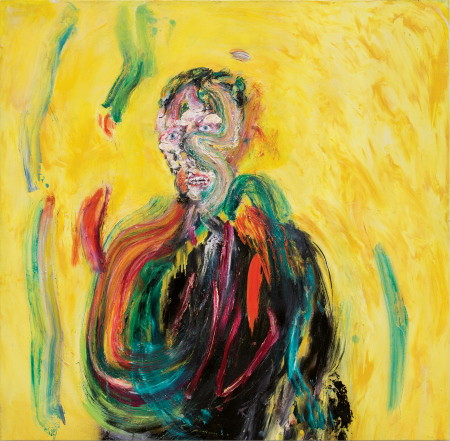 Though
it remains very distinctive, your painting has evolved since that time.
It seems larger and more likely to be painted on
canvas. How do you think it's changed?
Though
it remains very distinctive, your painting has evolved since that time.
It seems larger and more likely to be painted on
canvas. How do you think it's changed?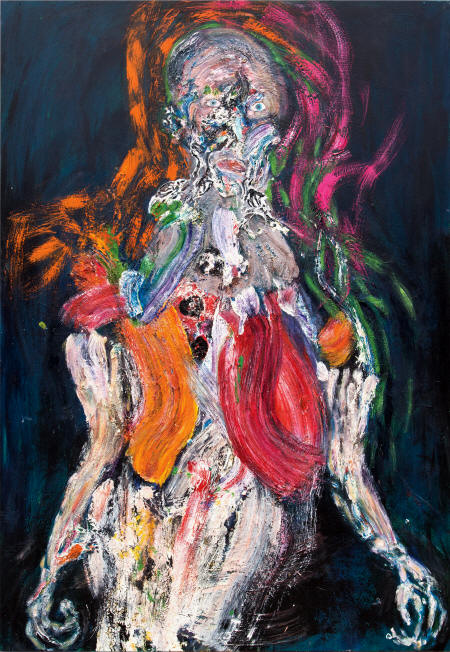 Your
work seems to express a wide range of emotions...
Your
work seems to express a wide range of emotions...